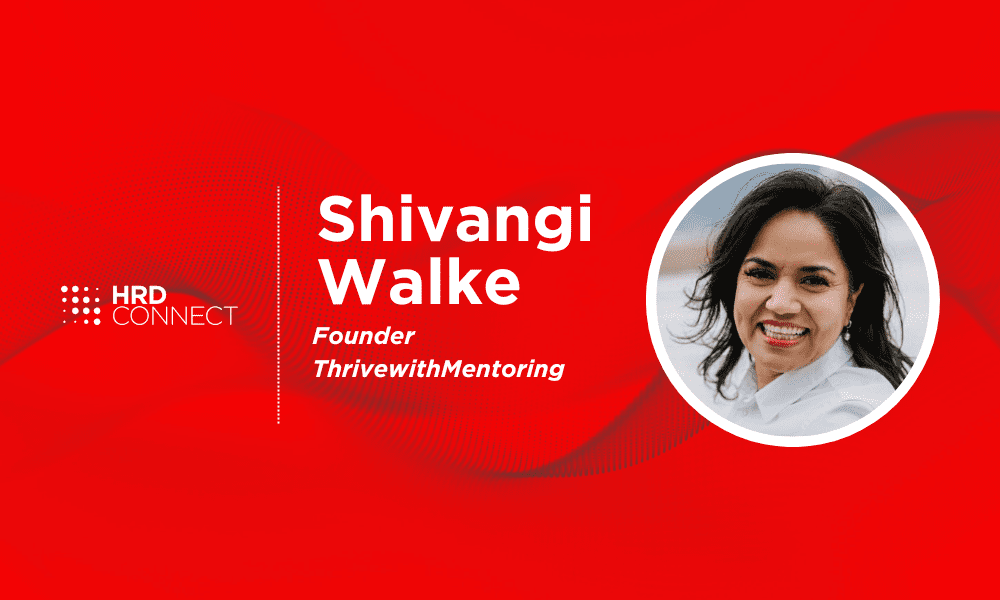Your leaders need help: Establishing mentorship to interrupt bias
- 6 Min Read
Shivangi Walke’s fundamental principles for mentorship schemes that interrupt unconscious bias and produce outstanding leaders.
- Author: Shivangi Walke
- Date published: May 30, 2023
- Categories

Cara had worked for the organization for nearly a decade. However, with aging parents at home and a partner recently diagnosed with a chronic illness, it was difficult for her to manage her kids, home, and work simultaneously. Things fell through the gap. Her team members began to notice the slip-ups.
Rachel, Cara’s manager for several years, had seen her begin to stagnate in her role due to family constraints. Rachel had Cara’s back because she had burned the midnight oil for the team when they needed her expertise. Her team was in a unique place to support her during her time of need.
Rachel’s continued resistance to firing Cara or at least having a “disciplinary” conversation with her wasn’t going down well with her superiors. They judged that Rachel was becoming emotional about a cut-and-dry issue of incompetence. Her superiors felt that Rachel wasn’t thinking like a leader, and this began to affect Rachel’s perception at the top level.
I wonder if Cara’s manager was a Jack or Peter instead of Rachel, would the perception at the top change so quickly?
Business leaders, especially women, need mentors
But consider that Rachel made a business decision and decided to fire Cara, against her character and nature. This inconsistency, coupled with preconceived gender norms, would make people feel that she was “trying” to be tough.
Hence unfeminine. Hence unreliable. Hence not a good leader. Hence not a leader.
This is the double bind that women regularly face in the corporate world. The prevailing cultural and leadership norms in an organization are difficult to read and assimilate. Navigating these double-bind situations is just one of several unconscious biases that mentoring addresses.
If Rachel’s superiors had mentors that trained them on bias, she might not have come up against this bind.
Leadership decisions are not always black and white. There is no one-size-fits-all leadership style that works in every culture or situation. This is where having a mentor who can guide you through the actions and consequences, especially unintended ones, can be particularly beneficial.
Creating mentorship schemes
You probably have a mentorship scheme already in place as a part of your talent management infrastructure. Successful mentorship schemes need to inculcate a few principles:
- Allowing both mentors and mentees to apply rather than nominating
- Ensuring chemistry plays an important role in the mentor-mentee matching process
- Training both mentors and mentees on what is expected and offering them supporting documentation such as mentoring contracts and meeting review templates
- Given the size of the intervention, mentoring-specific software might be useful, especially for the mentoring scheme program manager to monitor the progress of the relationships
- Keeping the administration minimal and allowing the pair to focus on the relationship
Bias interrupters refer to small adjustments made to your existing system. These adjustments do not necessarily require you to completely abandon your current way of thinking and existing.
Here are a few nudges you can inculcate in your existing mentorship schemes:
- When you invite leaders to apply to become a mentor or mentee, instead of thinking “who?” think “who else?” Diversify the mentor and mentee pool.
- When you do preliminary matches between the mentor and mentee, ensure diversity in functional background, gender, work experiences, ethnicity, and management exposure.
- Mitigate the ingroup-outgroup dynamic by asking: “Is everyone at the table?”
Mentorship schemes that interrupt bias
Following these principles to establish flourishing mentorship schemes will position your leaders to tackle bias in the workplace:
- Bringing in awareness: A mentor can help mentees identify and challenge their stereotypes. This may be by sharing information and experiences that are new and challenge their preconceived beliefs. The bias that mentees carry isn’t always outward in nature. It can be intrinsic too. Mentors question these unconscious assumptions. Often they do this by showing mentees a mirror and reflecting back what they hear from the mentee.
- Challenging mentees out of adaptive behavior: Remember this animation, Purl? A ball of yarn adapts to white male behavior to succeed in the workplace. All of us do this in some way. We serve as bias carriers when we do nothing to question it. Mentors call out such behavior and focus on what mentees could do differently.
- Being a role model: An effective mentor will be transparent about the limits of their understanding and can be open about this to their mentee. And that too from a space of security and confidence. This supports the mentee in finding their vulnerability and being OK with it. Leading by example is what you count on mentors for.
- Giving “Time to Think”: An effective mentor offers the mentee time to think. In the sacred presence of an attentive listener, the mentee can explore their own thinking. Without fear and shame. They help the mentee balance their rational and emotional sides when making decisions and taking action.
Not all bias is conscious
Unconscious bias comes in many forms. Studies have shown that when comparing identical resumes, individuals with non-Anglo-Saxon names or female names may require significantly more experience or receive lower salaries than their Anglo-Saxon male counterparts.
Here are a few more considerations for mentorship schemes around unconscious bias:
- Confirmation bias: A mentor challenges mentees to explore alternative perspectives and consider evidence that contradicts their preconceptions, helping them to recognize and overcome their confirmation bias.
- Halo effect: A mentor encourages mentees to focus on specific traits or behaviors, rather than forming a general impression of a person based on a single positive trait.
- Attribution bias: A mentor helps mentees develop a growth mindset, recognizing that outcomes are not solely determined by innate abilities, and encouraging them to take ownership of their successes and failures.
- In-group bias: A mentor encourages mentees to expand their networks and appreciate the value of diversity, encouraging them to form connections with individuals from different backgrounds and communities.
Mentorship can help mentees become more aware and slow to judge, leading to not just professional growth, but also personal growth as better human beings. It is a long journey of self-discovery, but one that is worth taking to become more inclusive and understanding of others.
________________
Shivangi Walke is a Leadership Branding Coach, Master Trainer, and Founder of the vibrant non-profit Thrive with Mentoring. She has trained and coached leaders and management teams in 40-plus countries on all continents.









